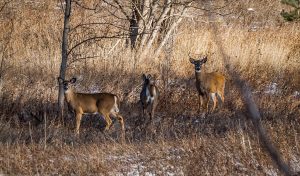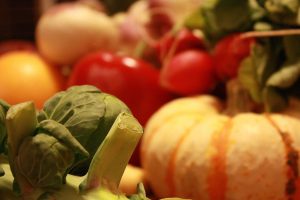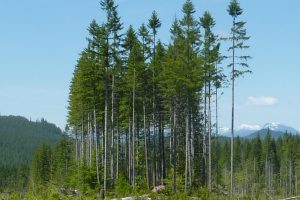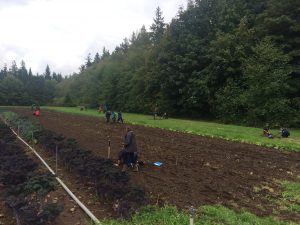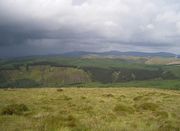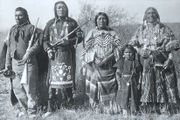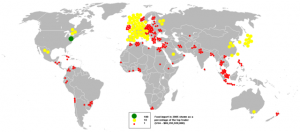Urban Deer Feeding in BC
Through this wiki page, examinations of possible outcomes of feeding urban deer in Central/Western British Columbia are performed. Possible outcomes include: An increase in deer/related automobile crashes, an increase in poaching, the spread of disease, especially Chronic Wasting Disease, change in deer eating habitats, which may result in unhealthy trends, and ecological effects that result from deer changing a primary food source.
Insistence on Cosmetically Perfect Fruits & Vegetables
Cosmetically Perfect Fruits and Vegetables meet aesthetic standards of size, shape, and are free of physical blemishes. Produce that does not meet these standards is often thrown away, and can be classified as either food loss or food waste. Food loss is defined as the edible food that is lost throughout production, postharvest, and processing, whereas food waste refers to edible food lost at the end of the food chain due to behaviour of retailers and consumers.
Octopus Fishery Management in Madagascar
Madagascar is credited with being amongst some of the largest islands in the world and is located just southeast of Africa in the Indian Ocean. It is an island with incredible biodiversity, and unsurprisingly, the fisheries in Madagascar are a big contributor to Madagascar’s economy. Octopus fishery management in Madagascar provides relevant evidence of the economic benefits of local fisheries management and their ability to promote community engagement in broader marine management.
Effect of Variable Retention Harvesting on Soil Microbial Communities in Coastal BC Forests
Soil microorganisms play important roles in regulating key forest ecosystem processes, such as nutrient cycling and organic matter decomposition. Living vegetation and soil microbes interact in complex ways,
Regrounding Riley Park: a Foundation for Sustainable Soil Management
Riley Park is located near the southeast corner of Ontario St. and 30th Ave in an area of Vancouver that is rapidly growing in population and increasingly in need of usable green space for multiple purposes. Subsequent to …
Soil Fertility Assessment for the UBC Farm
The UBC Farm is a 24 hectare student-driven, model farm located on the University of British Columbia’s Campus in Vancouver, Canada. The UBC Farm has developed a program …
The Re-Wilding Movement in the Heart of Wales
The Cambrian Mountains, once a striving natural land, has been overwhelmed by harsh agricultural practices which triggered a shift in native vegetation as well as habitat loss. Located in the heart of Wales, the Cambrian Mountains is home to farmers who raise sheep, a traditional source of protein and wool, through grazing practices that have left the land barren of natural vegetation. As George Monbiot describes it, the Cambrian Mountains have been reduced to a desert to support agricultural practices that are of small influence. This unprecedented shift in vegetation and habitat loss has gained the attention of the Welsh government and non-government organizations to collectively work with farmers in creating a sustainable management plan to revitalize the Cambrian Mountains.
The Opposition of the Standing Rock Sioux to the North Dakota Oil Pipeline
The Dakota Access Pipeline (commonly referred to as DAPL) runs for 1,172 miles, starting in the Bakken and Three Forks Formations and continuing Southeast through South Dakota and Iowa, ending in the Gulf Coast Refineries in Pakota, Illinois. The Bakken and Three Forks Formations, the point where Saskatchewan, Manitoba, North Dakota and Montana meet, have an estimated 7.4 billion barrels of oil and 0.53 billion barrels of natural gas trapped underground. In addition to crossing over four state borders, the proposed pipeline route will cross under the Missouri and Mississippi Rivers as well as a section of Lake Oahe, located half a mile from the Standing Rock Sioux Reservation border.
Indigenous Homelands in Yellowstone National Park
During the era of colonialism, with the emergence of conservation and preservation movements, Yellowstone National Park (YNP) was created. This park was created to protect a valuable ecosystem and promote the wilderness conservation movement. However the creation of this park affected several stakeholders and created several issues over land rights, sovereignty, and environmental management. The major affected stakeholder that will be discussed are the traditional Indigenous people of the Yellowstone area, how they initially were displaced from their land with the creation of the park to present day issues they face at the cost of conservation.
Dietary Dependence on Foreign Crops
People around the world are now more dependent on foreign crops than ever before. This substantial change in production and reliance on foreign crops is partly due the fact that not all crops can be grown in the same climate, and partly due to economic incentives for developing countries to sell their products on the global market. Currently, the dependence on foreign crops is largely due to the decreased value of national currency for exporting countries, cultural supermarket norms in developed countries, and food trends that increase the intensification of monoculture cash-crops. Additionally, as the incomes of developing countries increase, so too does their ability to acquire larger and more exotic food supplies.
